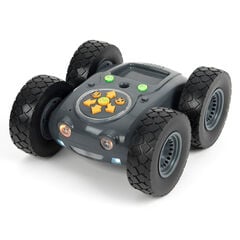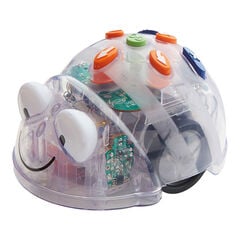I started working in schools in 2010. My background with working with computers since the 1980s was put to good use by the Headteacher at the first school I worked with. I was employed to provide technical support to the other teachers at the school. It was at that point that I first used the Bee-Bot by TTS Group. When I qualified as a Class Teacher a few years later, I was eager to make use of the Bee-Bot to teach Computing. The reorganisation of the National Curriculum in 2014 set the expectation that Computer Programming be taught to children as young as Year 1.
‘Thinkering’ in Computing
Based on my experiences of being a parent and teacher, I spotted that many children as young as aged 3 have a boundless level of curiosity and attitude to learning. So when I became the Head of Computing, I began to teach advanced ideas of Computer Programming (which are usually taught at A-Level) by applying what Professor Danielle George has called the technique of “thinkering” with its learn through play origins, classic of Piaget. The ideas are clearly scaffolded to the much younger learners in Reception and the children absolutely lapped it up (or should I say “lap-topped” it up).
Digitally Literate Generation
The other big misconception that has emerged since 2020 is this moral panic of “lost-learning” and demands for “covid-catchup” classes. Having become the subject leader for Computing in Summer 2020, what I have observed is that the children I work with are more digitally literate and have the confidence to use technology for their learning. Video cameras on a device are no longer a novel concept. In fact, some children are curious enough to ask why some devices like PCs still do not have video camera technology built in.
The Rugged Robots arrived …

It is therefore unsurprising that when I took delivery of three Rugged Robots and half a dozen Blue-Bots and left them in Nursery during their weekly “Technology Time” with me, the children were more than familiar with programming the devices. They were confident to use the on-board buttons to make the devices move around in an ordered and very deliberately designed sequence. Such is their computational thinking and programming skills, the children in Reception are exhibiting learning outcomes that were once listed as Age Related Expectations for children aged 5 or 6.

Worth the money
In these financially difficult times, there will be tough decisions for school leaders around what to spend their money on. However, as teachers like me are able to share our practice on social media and work together as a global teaching community, we can share lesson plans and teaching ideas to support the use of the Rugged Robot and Blue-Bots all the way up to Year 6. In particular the use of the Blue-Bot and Rugged Robot apps (available from the Apple App Store or Google Play) which can be paired with the devices.
The Rugged Robot is so robust, the children have been fascinated and keen to take their Computer Programming out into the playground. And, with the app being programmed using Unity, it makes the product potentially suitable for an A-Level Computer Science non-examined assessment project … but that’s for the children currently in Nursery to maybe think about in ten years time!
With many thanks to Allen Tsui for sharing this blog with us.
About the author:
Allen Tsui is Head of Computing at Willow Brook Primary School Academy in East London. Willow Brook is part of the Griffin Schools (Multi Academy) Trust which is a family of Primary and Secondary schools in East London, Kent and the Midlands.
Allen is very active on Twitter @TsuiAllen.





